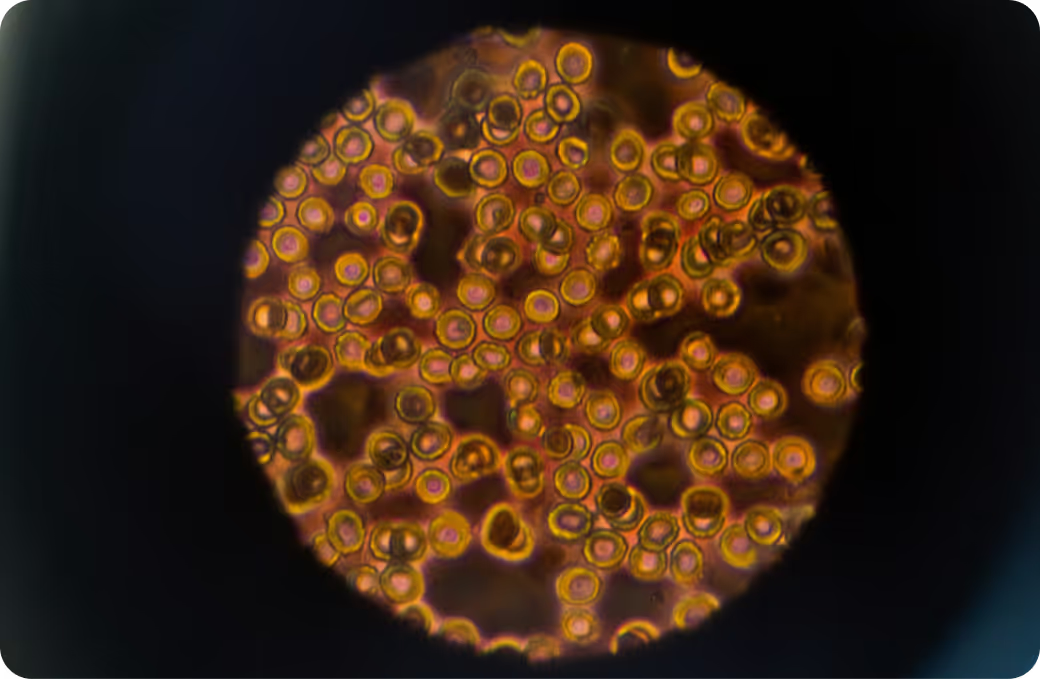Key Insights
- See your current exposure to propylene oxide — reflected by its urinary biomarker, N‑acetyl (2‑hydroxypropyl) cysteine (NAHP) — and how it compares with typical levels.
- Identify meaningful exposure patterns and potential sources (e.g., work around sterilization or foam manufacturing, tobacco smoke, or foods treated for microbial control).
- Clarify whether propylene oxide exposure could be adding to symptom clusters like eye or airway irritation, headaches, or general fatigue through irritation and oxidative stress pathways.
- Support reproductive planning or pregnancy safety by checking for elevations during sensitive life stages.
- Track trends over time after changing products, environments, or occupational practices.
- Inform conversations with your clinician about whether additional evaluations or targeted exposure‑reduction strategies make sense for you.
What is Propylene Oxide (Measured by NAHP)?
NAHP is a urinary “mercapturic acid” metabolite that forms when your body detoxifies propylene oxide, a small, highly reactive epoxide used to sterilize medical equipment and some foods and to make polyurethane and other chemicals. Propylene oxide can also be present in tobacco smoke and certain industrial or warehouse air. People are mainly exposed by inhalation in workplaces or enclosed spaces; smaller amounts may come from ingestion of foods that have been treated for microbial control. Labs typically measure NAHP in urine, often adjusted for creatinine. Because this metabolite clears relatively quickly, a single result reflects recent exposure — generally the last day or two.
Why it matters: propylene oxide is an alkylating agent that readily reacts with biological molecules. At sufficient doses it can irritate eyes and airways, and in animal studies it has shown genotoxic potential. Regulatory and expert groups classify it as a probable human carcinogen, though typical community exposures are much lower than in industrial settings. Your body conjugates propylene oxide with glutathione, then processes it to NAHP and excretes it in urine. That makes NAHP a practical, near‑term readout of exposure without needing to measure the parent gas directly. The goal is balanced: not alarm, but visibility — letting you see whether propylene oxide is likely part of your current exposure landscape.
Why Is It Important to Test For Propylene Oxide?
Propylene oxide’s biology connects to real‑world questions. If you work in sterilization, foam or resin manufacturing, warehousing near fumigated goods, or are frequently around tobacco smoke, this epoxide can contact your eyes and airways and add oxidative and irritation stress. Measuring NAHP helps distinguish incidental contact (a brief whiff during a one‑time task) from sustained exposure (repeated or daily contact), which is what tends to matter for symptoms and long‑term risk. Because the metabolite reflects recent exposure, a result that stays low across repeated tests suggests routine exposure is limited; elevations that persist over time suggest a meaningful ongoing source. Testing can be especially informative before or during pregnancy, in fertility planning, or when you’re troubleshooting headaches, sore throat, cough, or unexplained fatigue in a high‑exposure setting.
Big picture: a single environmental toxin marker rarely tells the whole story. Patterns across multiple exposure markers, plus general health labs and your lived context, provide the most reliable picture of risk over time. Think of NAHP like checking your step count from yesterday — useful, but more powerful as a trend. Repeat results, paired with symptom timelines and known exposures, help separate transient spikes from persistent patterns and guide sensible next steps with your clinician.
What Insights Will I Get From an NAHP Test?
Labs report NAHP in urine, often normalized to creatinine to account for hydration. Reference intervals are typically population‑based — what most people without known high exposures fall into. For environmental toxins, lower values are generally preferable when feasible, and interpretation improves when you know what you were doing in the prior 24–48 hours. A second measurement after typical routines can confirm whether a higher reading was a one‑off or part of your baseline.
Relatively lower NAHP usually means limited recent contact with propylene oxide and a lower likelihood of short‑term airway or eye irritation from this specific epoxide. Non‑smokers outside of industrial settings often land here. In pregnancy and early childhood, lower exposures are particularly desirable because developing tissues are more sensitive to oxidative and inflammatory stress, and epoxides can cross biological barriers, though everyday levels in the general population are usually low.
Relatively higher NAHP points to recent or ongoing exposure — common examples include regular tobacco smoke exposure or work around sterilization processes or foams. When elevated, the systems doing extra work are primarily the airways and the liver’s detox pathways that handle glutathione conjugation and clearance. Symptoms, if present, often show up where this toxin contacts or stresses tissue first: eyes, nose, throat, and sometimes nonspecific fatigue or headache after work shifts. Because the metabolite clears within about a day or two, persistent elevations across multiple tests tend to reflect a repeating source rather than a single encounter.







.avif)



.svg)





.svg)


.svg)


.svg)

.avif)
.svg)










.avif)
.avif)
.avif)


.avif)
.avif)




.svg)


